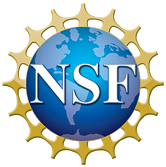Fourth Computational and Data Science school for HEP (CoDaS-HEP 2022)
407 Jadwin Hall
Princeton University
The fourth school on tools, techniques and methods for Computational and Data Science for High Energy Physics (CoDaS-HEP 2022) will take place on 1-5 August, 2022, at Princeton University.
Advanced software is a critical ingredient to scientific research. Training young researchers in the latest tools and techniques is an essential part of developing the skills required for a successful career both in research and in industry.
The CoDaS-HEP school aims to provide a broad introduction to these critical skills as well as an overview of applications High Energy Physics. Specific topics to be covered at the school include:
- Parallel Programming
- Big Data Tools and Techniques
- Machine Learning
- Practical skills like performance evaluation, collaborative use of git/github, etc.
The school offers a limited number of young researchers an opportunity to learn these skills from experienced scientists and instructors. Successful applicants will receive travel and lodging support to attend the school.
School website: http://codas-hep.org
Applications for the CoDaS-HEP 2022 school are now being accepted. Please use this Google Form to apply. The deadline for application is 6 May, 2022. Applicants will be notified regarding acceptance and available travel support by 15 May.
The school lectures will take place in 407 Jadwin Hall, in the main lecture hall of the Princeton Center for Theoretical Science (PCTS).
| This project is supported by National Science Foundation grants OAC-1829707, OAC-1829729 and OAC-1836650, the Princeton Institute for Computational Science and Engineering (PICSciE), the Princeton Physics Department, the Office of the Dean for Research of Princeton University and the Enrico Fermi Institute at the University of Chicago. Any opinions, findings, conclusions or recommendations expressed in this material are those of the developers and do not necessarily reflect the views of the National Science Foundation. |  |